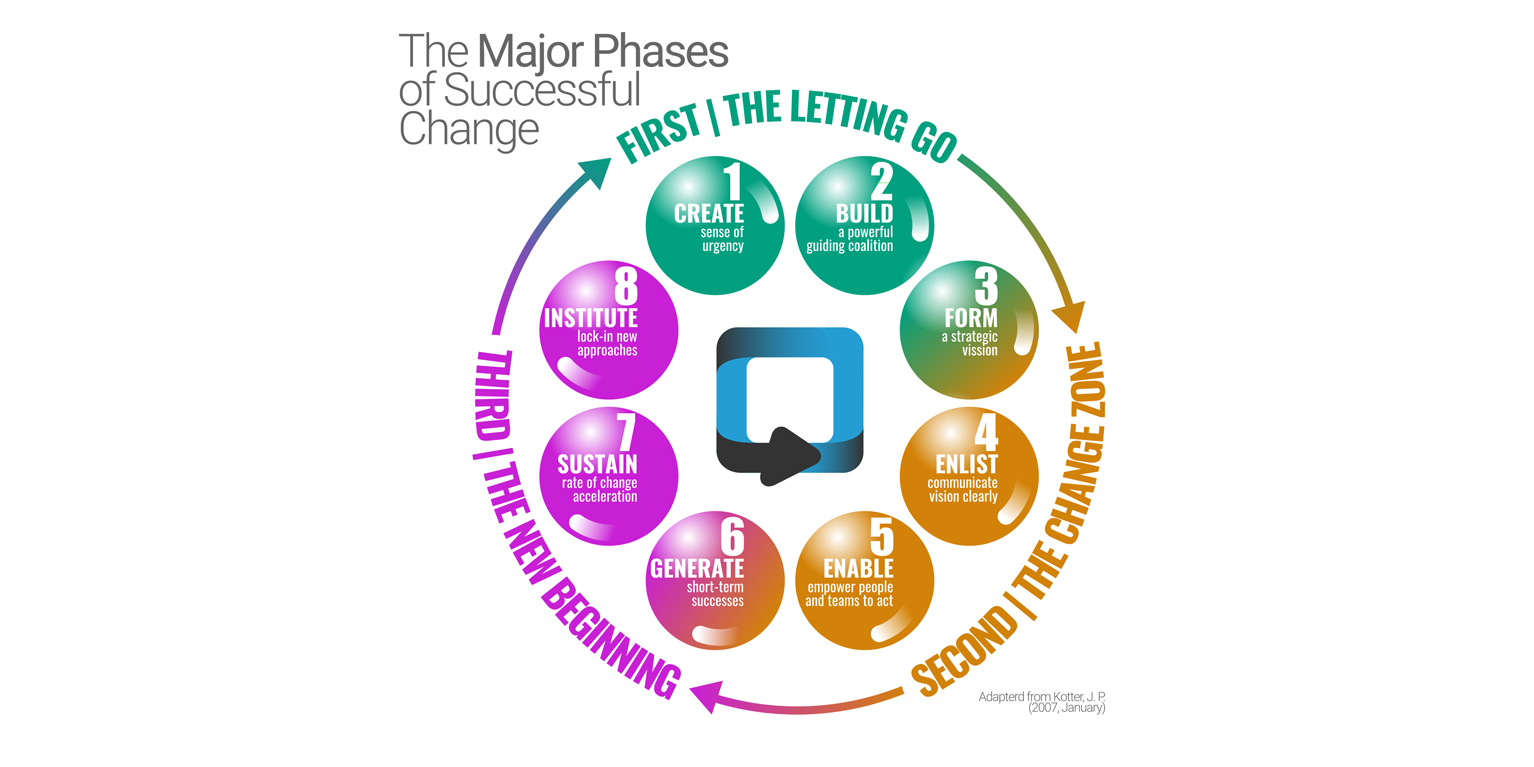Navigating the Three Phases of Strategic Change
First – The letting go
One might consider people to be the hardest thing to change, and corporate culture is often overlooked. It often seems the fundamental DNA of the business will always resist change to process and policy. Culture has a way of pulling the entire enterprise back to its pre-change state. Of course, nobody wants to destroy a deeply developed culture and years of traditions that have significant intangible value, so you need to find a way to shift both people and culture as one.
The importance of enterprise buy-in
People are critical to achieving successful change. It is vital to present individuals with a clear view of the future and a strategy of how we as a team (or any organization) are planning to get there. Everyone must recognize that they each have an important role to play in change, sharing this common interest and actively supporting the company’s strategy through this potentially turbulent period. What each of us involved in change requires is an invitation to this collective action as a team.
An invitation to change
Anyone driving macro change at an enterprise level needs to publicize their intention to evolve the business model. Those architects of change need to be cognizant of letting go of the old ways and helping people to understand why.
Second – The Change Zone
It is easy to overlook stakeholder groups; our focus is so often inward. Consider the perspective of all interested parties:
Customer Change Perspective | We need to understand what our customers want before they do. Our change must always positively affect customers, their productivity, and their return on investment. A customer change strategy must be almost a seamless, constant improvement rather than delivered in bursts of activity.
Partner Change Perspective | It is important to understand that the needs and interests of partners are preserved, and they understand that our change would be in their best interest if the business evolved and grew.
Personnel Change Perspective | There is always going to be some degree of resistance among people given the disruption and organizational shift. Communicating the ‘invitation to change’ with clarity will be critical to gaining the support of stakeholders and preserving corporate culture.
Third – The new beginning
Applying John Kotter’s Change Model in the context of these change perspectives will be invaluable. By having a sense of urgency, a strong unified guiding coalition and building high levels of trust in the vision through clear strategic communication will give the organization the space to change and offer the greatest chance of success. But strategic change is not a waterfall project–the purpose of a project is that it stays on a predetermined path, and that it achieves a purpose on a specific given date. Strategy (Strategic Portfolio Management) is constantly in a state of transition, as we are always strategizing and making small (or large) course corrections when conditions change, and as a result, the fundamental nature of any business is to be dynamic.
Maintaining a change-oriented mindset
People, regardless of their perspective, need to adopt a change-oriented mindset. As an architect of change, it is our responsibility to create an environment, a culture, which allows people to believe they can change successfully. It requires a strategic transformational approach to thinking, transparency of vision and authentic leadership behavior. We must always strive to eliminate doubt and uncertainty.




Leave A Comment